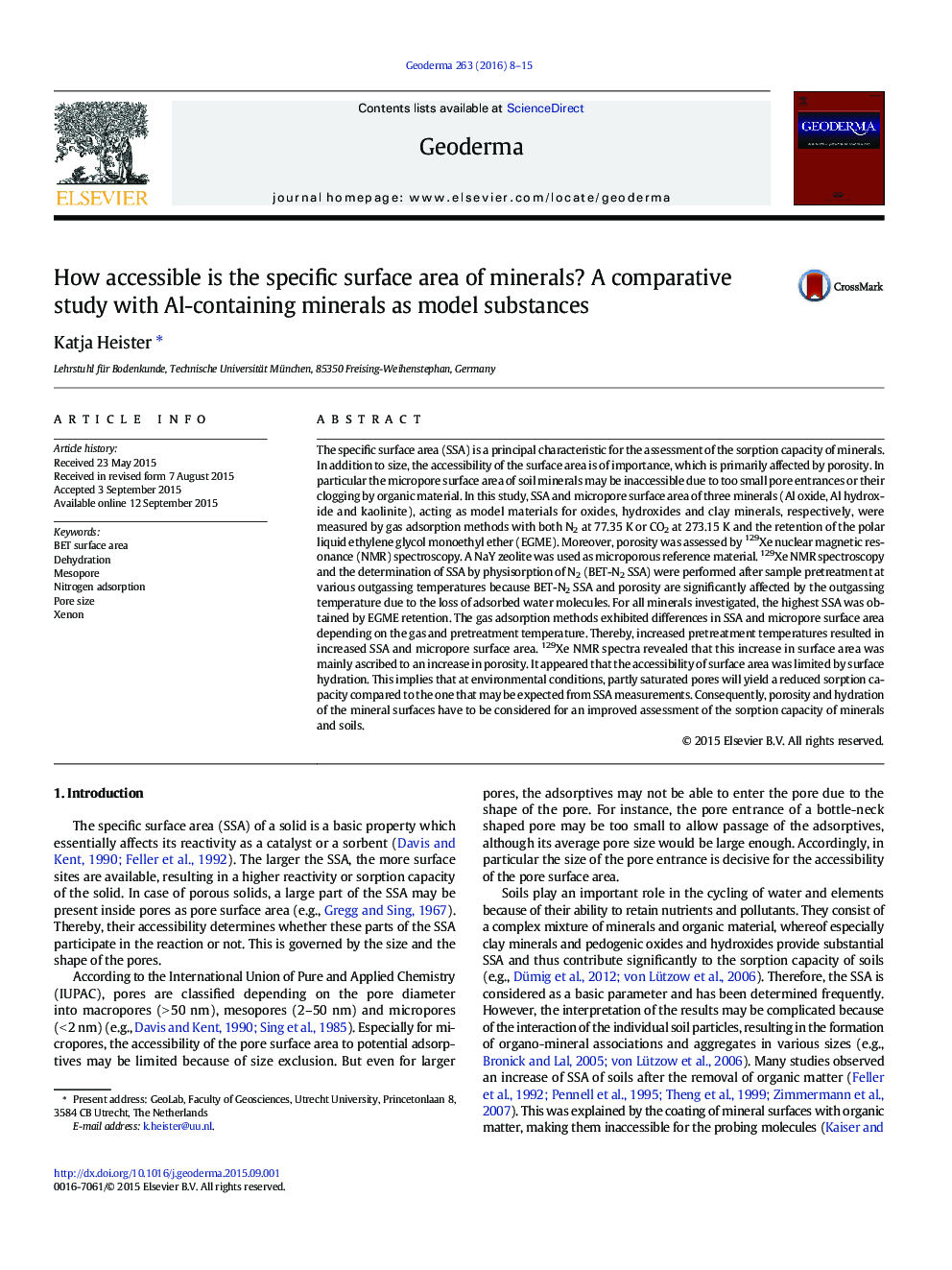| کد مقاله | کد نشریه | سال انتشار | مقاله انگلیسی | نسخه تمام متن |
|---|---|---|---|---|
| 6408455 | 1629453 | 2016 | 8 صفحه PDF | دانلود رایگان |
- Micropore and specific surface area of minerals were measured by various methods.
- Porosity was assessed by 129Xe nuclear magnetic resonance spectroscopy.
- Elevated pretreatment temperatures resulted in increased surface area and porosity.
- Accessibility of surface area appeared to be limited by surface hydration.
- Partly saturated pores may reduce sorption capacity of soils compared to expectation.
The specific surface area (SSA) is a principal characteristic for the assessment of the sorption capacity of minerals. In addition to size, the accessibility of the surface area is of importance, which is primarily affected by porosity. In particular the micropore surface area of soil minerals may be inaccessible due to too small pore entrances or their clogging by organic material. In this study, SSA and micropore surface area of three minerals (Al oxide, Al hydroxide and kaolinite), acting as model materials for oxides, hydroxides and clay minerals, respectively, were measured by gas adsorption methods with both N2 at 77.35Â K or CO2 at 273.15Â K and the retention of the polar liquid ethylene glycol monoethyl ether (EGME). Moreover, porosity was assessed by 129Xe nuclear magnetic resonance (NMR) spectroscopy. A NaY zeolite was used as microporous reference material. 129Xe NMR spectroscopy and the determination of SSA by physisorption of N2 (BET-N2 SSA) were performed after sample pretreatment at various outgassing temperatures because BET-N2 SSA and porosity are significantly affected by the outgassing temperature due to the loss of adsorbed water molecules. For all minerals investigated, the highest SSA was obtained by EGME retention. The gas adsorption methods exhibited differences in SSA and micropore surface area depending on the gas and pretreatment temperature. Thereby, increased pretreatment temperatures resulted in increased SSA and micropore surface area. 129Xe NMR spectra revealed that this increase in surface area was mainly ascribed to an increase in porosity. It appeared that the accessibility of surface area was limited by surface hydration. This implies that at environmental conditions, partly saturated pores will yield a reduced sorption capacity compared to the one that may be expected from SSA measurements. Consequently, porosity and hydration of the mineral surfaces have to be considered for an improved assessment of the sorption capacity of minerals and soils.
Journal: Geoderma - Volume 263, 1 February 2016, Pages 8-15
